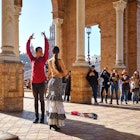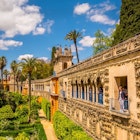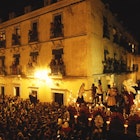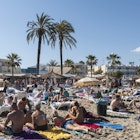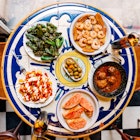Seville’s identity is congenitally linked to Triana, a soulful neighbourhood on the west bank of the Guadalquivir River whose past is littered with stories of sailors, ceramicists, matadors, flamenco singers, Roma rebels and religious zealots.
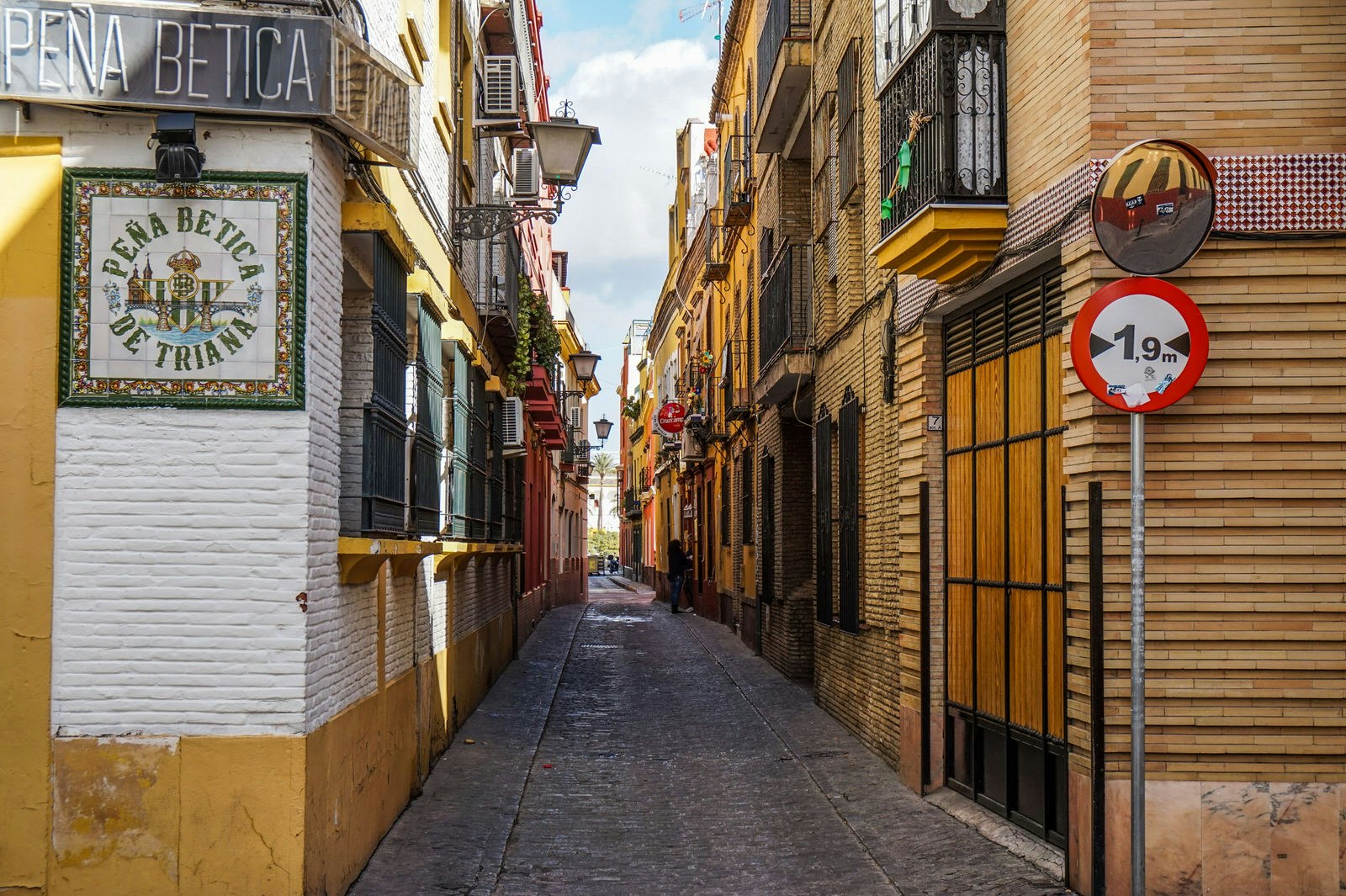
Crammed onto a virtual island between two branches of the Guadalquivir River, Triana has long been Seville’s ‘outsider’ enclave, its strong working-class affiliations shaped by a tumultuous history. Until the 1850s, the district was linked to the rest of the city by a single floating bridge and labelled extramuros (outside the walls) by Seville’s authorities, a place where ‘undesirables’ were sent to live. But modern-day visitors can experience the tenacious soul of Triana, one of Seville’s most fascinating neighbourhoods.
The infamy of the Spanish Inquisition
Triana’s infamy grew in 1481 when the seat of the Inquisition Court was set up by the Catholic Monarchs in the Castillo de San Jorge on the banks of the Guadalquivir. For over 300 years the castle acted as a court and prison for religious ‘deviants’ accused of heresy. Unscrupulous punishments were meted out inside.
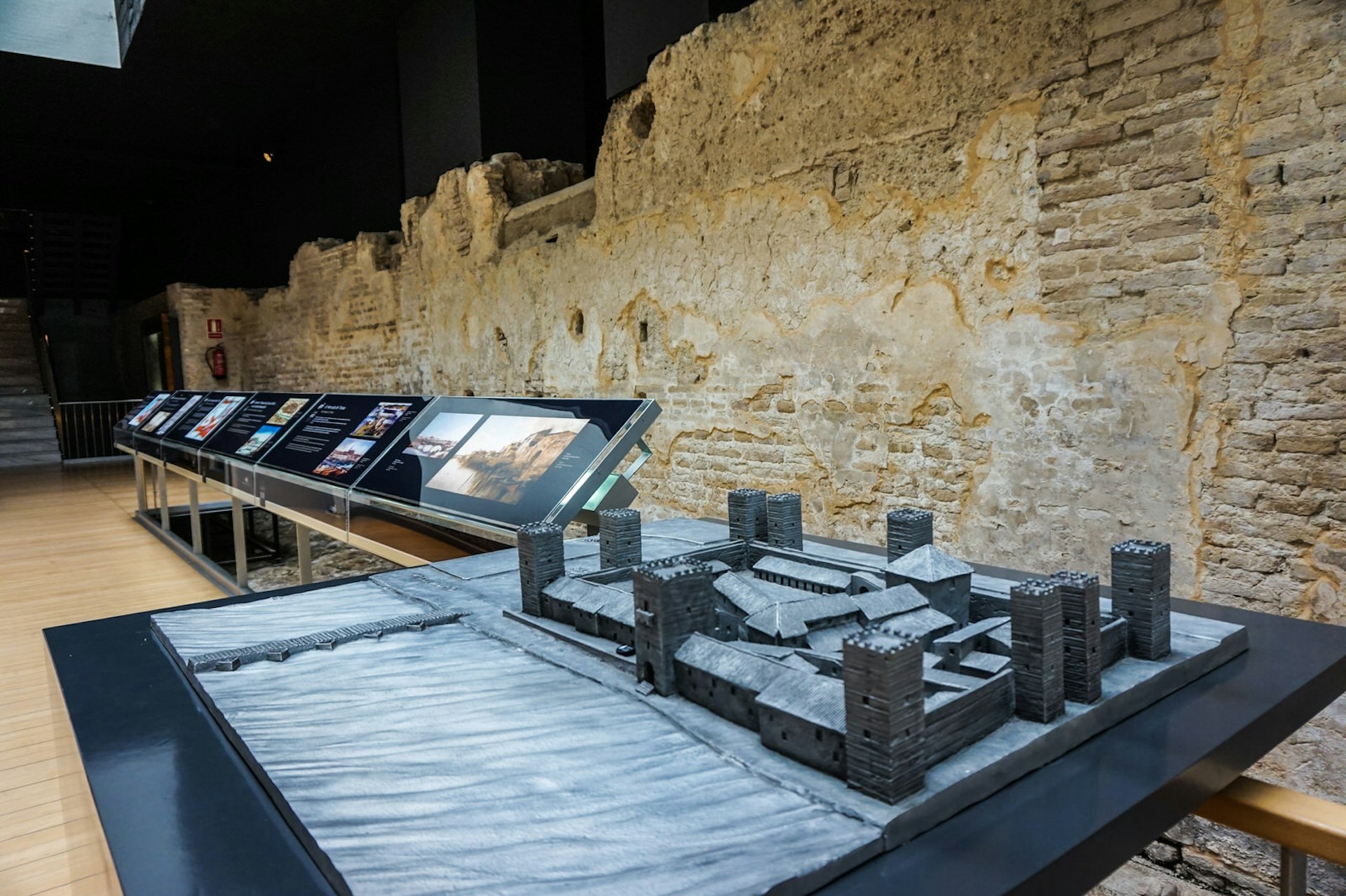
When the Inquisition was finally extinguished in the early 1800s, the castle was demolished and a market built over its foundations. But the ghosts of the tormented refused to be buried. In 1990, when the original market was being refurbished, the castle’s foundations were rediscovered, but this time they were preserved rather than filled in. A modern museum, inaugurated in 2009, has incorporated the castle’s remains into a large, glass-encased space replete with multimedia exhibits that tell the macabre story of the Inquisition and its cruelties – lest we forget.
A past moulded in clay
Unlike central Seville with its ostentatious cathedral, Triana is not drop-dead spectacular. Instead, much of the neighbourhood’s beauty lies in its atmosphere, which – rather like a good flamenco performance – creeps up and seduces you slowly.
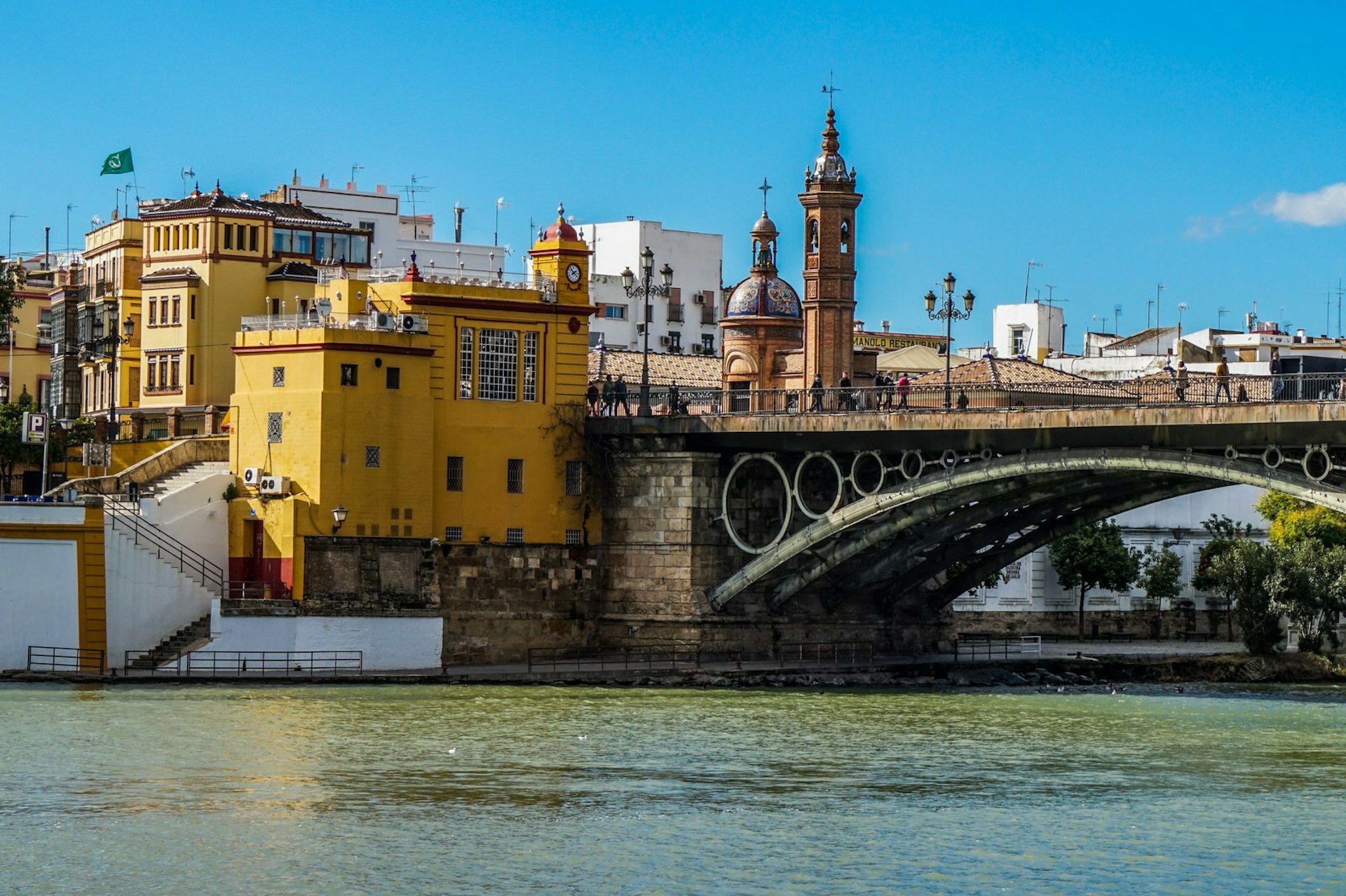
Enter the quarter by crossing the Isabel II Bridge and you’ll find yourself in Plaza Altozano, a misshapen ‘square’ which offers various hints of Triana’s complex personality. From here you can peruse a statue of local bullfighter Juan Belmonte alongside scattered images of the Virgin Mary etched onto brightly painted buildings, and shops trimmed with decorative azulejos (tiles).
Triana, thanks to the abundance of easy-to-mould clay found on the banks of the Guadalquivir, has been involved in artisan ceramic-making since Roman times. The trade flourished under the Moors, who first concocted the azulejo, and the tile industry enjoyed a second renaissance in the mid-20th century when Neo-Mudéjar architecture was in vogue. Starting in the 1960s, most of the factories were forced to close. In an attempt to preserve Triana’s artisanship for posterity, one of them has recently reopened as a museum. The Centro Cerámica Triana explains the detailed precision required to make the distinctive sevillano ceramics and highlights Triana’s starring role in the trade. Handily positioned just outside is the neighbourhood’s finest tile shop, the Ceramica Santa Ana, in business for 150 years.

Flamenco – a soulful art
For centuries, the bulk of Triana’s population was Roma, the descendants of groups of itinerants that had drifted into Spain from the east in the 15th or 16th centuries. Putting down roots in Seville, the Roma lived in communal corrales de vecinos, compounds of small, crowded tenements arranged around a multi-purpose courtyard that served jointly as a laundry, meeting area, workplace and performance space for the Roma’s ebullient juergas (parties). Several corrales have survived in Triana, most notably in Calle Castilla and Calle Pagés del Corro, although their 21st-century incarnations have been modernized and beautified with assorted greenery.
Although initially private affairs, the wailing laments and esoteric dancing that drifted out of the juergas soon woke up the rest of the city to a powerful and soulful art. When people claim that flamenco was invented in Seville, they’re really talking about Triana. The neighbourhood is name-checked in numerous flamenco songs, and its large interlinked Roma families produced many of the music’s greatest performers.

Most of Seville’s Roma were resettled in the city’s new suburbs in the 1960s, a move that altered the demographics of Triana, but not its essence. Unlike the more sanitized Santa Cruz quarter, the neighbourhood has retained much of its authenticity. Its outdoor living room in the summer is the bar-filled Calle Betis overlooking the river where the clink of beer glasses competes with the aroma of frying fish. Stroll down Betis after midnight (still early by Triana standards) and you might get lucky with a rough-around-the-edges flamenco show in one of its rambunctious bars. T de Triana is usually a good bet.
Triana’s proverbial kitchen is the fish-biased Mercado Triana, a traditional market that isn’t afraid to move with the times. Among the resident fishmongers, look out for Cervezas Taifa, one of Andalucia’s pioneering nano-breweries making and serving its own beer on the premises, and Taller Andaluz de Cocina, a new cooking school that also runs market tours. Just behind the market and heavy with bull-fighting and flamenco nostalgia is legendary bar/restaurant, Casa Cuesta, which has been pulling cervezas since 1880.
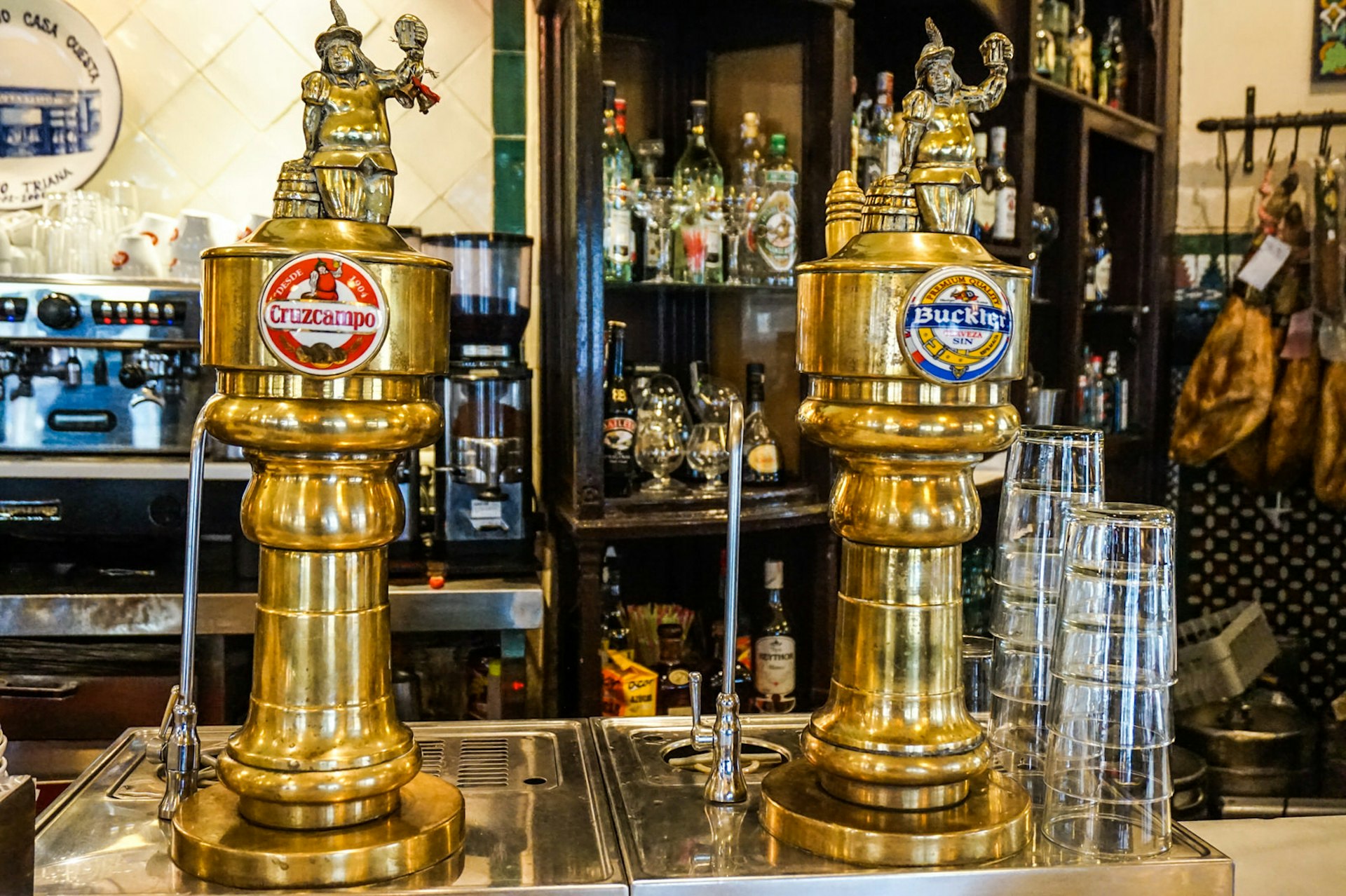
Processions and festivals
Religious zealotry might have been snuffed out with suppression of the Inquisition, but Triana’s devotion to its santos (saints) remains famously pious. The two most fervent cults honour the Virgen de la Esperanza, whose image resides in the Capilla de Marineros (esperanza-de-triana.es), and Cristo de la Expiración, bivouacked in an eponymous basilica in Calle Castilla. The latter statue is popularly known as ‘El Cachorro’ – its carved countenance depicting the dying Christ supposedly resembles that of a stabbed Roma man whom the sculptor, Francisco Ruiz Gijón, encountered on the streets of Triana in the 1680s. Both saints are carried solemnly on floats to Seville cathedral during Semana Santa.
For a more liberated spirit, visit Triana in July for the 400-year-old Velá Santa Ana (visitasevilla.es), the neighbourhood’s mini-feria (fair) that replicates in a smaller but no less riotous way Seville’s world-renowned Feria de Abril. During the mini-feria, numerous casetas (temporary bars) are set up in Calle Betis, silly water games make a big splash in the river, and unadulterated flamenco vibrates a makeshift stage in Plaza Altozano. It’s the ultimate manifestation of Triana and all its vivid idiosyncrasies.




